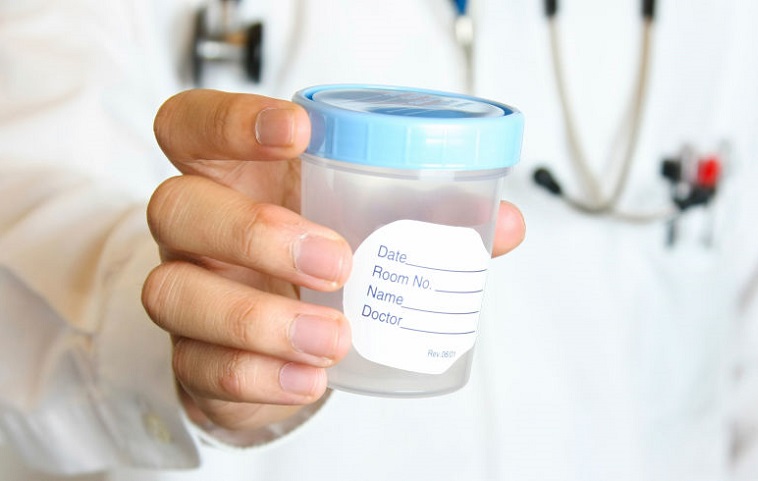How is the safety of sperm, eggs and embryos ensured during IVF?

Pay attention to this after IVF
3 October 2022How is the safety of sperm, eggs and embryos ensured during IVF?

How is the safety of sperm, eggs and embryos ensured during IVF?
IVF treatment is a treatment method often preferred by people who are unable to have children naturally. In IVF treatment, a woman’s ovaries usually need drugs that release fertility hormones in order for her ovaries to produce a large number of eggs. Eggs collected after drug treatment are collected in the laboratory.
If the sperm quality is at a normal level, IVF treatment can be applied. However, if there are problems with sperm quantity or quality, intracytoplasmic sperm injection may be preferable. In this method, one sperm cell is taken and injected into the egg.
If fertilization is successful, Embryoswill develop in 2-6 days. In this process, the embryologist will select the strongest embryo and then transfer that embryo into the woman’s uterus.
Good quality embryos are usually obtained during the fertilization process. In such cases, it is preferable to transfer one embryo and freeze the rest. Because transferring more than one embryo increases the risk of multiple pregnancies. If the embryo transfer fails, these embryos can be thawed and used the next time in vitro fertilization is attempted.
IVF treatment is a method that works especially well for women who have problems with their fallopian tubes. Women with fertility problems such as polycystic ovary syndrome or endometriosis are also eligible for IVF fertility treatment.
Women with irregular menstrual cycles may also benefit from IVF treatment. With treatment, a woman whose ovulation cycle improves can produce healthy eggs. However, if healthy egg production has not started yet, other methods may need to be tried.
Egg freezing
Egg freezing is one of the fertility preservation methods for women who plan to have a child in the future. In the freezing process, eggs are frozen from a woman’s ovaries after they have been collected. When used, frozen eggs are thawed and used to treat infertility.
A woman’s chances of conceiving naturally decrease as she gets older due to the decline in egg quality and quantity. With egg freezing, women’s eggs can be frozen at a young age to use higher quality eggs when they want to have a baby.
You may prefer freezing eggs in the following situations:
• If you have a condition that will affect your fertility, such as cancer, and you need treatment for it.
• If you are not yet ready to have children but are afraid that your fertility will decrease when you want to have children in the future.
• If you don’t want to leave unused embryos with IVF, egg freezing may be an option for you.
For egg freezing, it is first checked whether your health condition is suitable. Then the process of in vitro fertilization begins, which usually takes two or three weeks. In this process, you will need to take some medications to increase egg production and support egg maturation. When your eggs are ready, your doctor will collect them.
At this stage, the eggs are frozen with the addition of a cryoprotectant instead of being fertilized with sperm. In the freezing process, vitrification or quick freezing is preferred, and then the eggs are stored in liquid nitrogen. According to some studies, instead of slow freezing, the vitrification method may be more successful.
Eggs collected from women are usually around 15. However, this number may not be reached in women with low ovarian reserve. When you want to use the eggs, they are thawed and the surviving eggs are fertilized with sperm and become embryos.
Is egg freezing safe?
IVF treatment is generally considered safe. However, some women may experience some side effects depending on the fertility drugs used during treatment. Although these effects are usually mild, ovarian hyperstimulation syndrome may occur in some cases. Because this syndrome is a serious disorder, you should monitor your symptoms and see if this situation occurs to you.
The biggest risk of IVF treatment is the risk that the treatment will not work. In addition, some studies show that the risk of miscarriage is higher with pregnancies obtained with thawed eggs. However, since the number of samples on which such studies have been performed is limited, the exact effects cannot be known with certainty.
Although your eggs are of good quality, along with other risks, pregnancy-related complications can occur with age.
Sperm freezing
Men may request that their sperm be frozen for use in future procedures. When freezing sperm, first of all, your sperm is subjected to medical control against diseases. You then need to agree on how long you want to keep your sperm.
During the freezing process, the spermatozoa are mixed with a protective fluid called a cryoprotectant and frozen. The semen can then be stored in separate compartments to avoid having to defrost them all at once.
You may prefer sperm freezing in the following situations:
- If you have a health problem that could affect your fertility and need treatment.
- If you want to have a vasectomy but don’t want to rule out having children in the future
- If you have low sperm levels or your sperm quality is deteriorating
- If you have problems producing sperm on the days needed for fertility treatment
Is sperm freezing safe?
Freezing sperm is a very safe method. No problems have been observed in children born with frozen sperm. However, you should be aware that all thawed sperm may not survive.
Embryo freezing
If more than one quality embryo is obtained during IVF, the extra embryos can be frozen instead of being disposed of in case they are used for a later transfer. Embryos can also be frozen and stored for future use to preserve fertility.
Not every embryo is suitable for freezing. Only good quality embryos are selected for freezing. Embryos can be frozen at different stages of development. Embryos that can be frozen, even if they are single cells, can also be frozen when they reach the blastocyst stage.
Embryosare frozen with a liquid called a cryoprotectant to protect the embryos. This liquid prevents crystallization and possible damage to the embryos. For embryo freezing, fast freezing or slow freezing may be preferable.
What process should be followed before using frozen embryos?
The process of embryo transfer in each clinic may be different. Before embryo transfer, they check if you are ovulating regularly. If your menstrual cycles are regular, your doctor may be able to place Embryosin your uterus without resorting to fertility drugs. In this case, ultrasound can be used to view the lining of the uterus. A urine or blood test can also be used to check the timing of ovulation. Thus, it becomes clear whether the inner lining of the uterus is ready for the attachment of the embryo.
If your menstrual cycles are irregular, your doctor may recommend that you take some fertility drugs. Thus, the inner lining of the uterus will become suitable for the attachment of the embryo.
When the time is right, your embryos will be thawed and possibly one will be transferred to your uterus. Multiple embryo transfer is generally preferred in very rare cases, especially if you are over 40 years of age.
Not every embryo survives freezing and thawing of embryos.
How is the safety of sperm, eggs and embryos ensured?
There are various applications for identifying embryos, eggs or sperm in fertility clinics. Some clinics write information on the labels by hand, others use modern technology using radio frequencies.
To prevent the mixing of embryos, sperm and eggs, IVF centers must implement a safety process consisting of several steps. Some centers where the technology is used for identification purposes require at least two healthcare professionals to verify information such as a person’s birthday and social security number and act accordingly to ensure the safety of embryos, sperm and eggs.
The combination of the right sperm and egg is of great importance. Because only in this way can embryos appear that carry the couple’s genetics. For this reason, when your embryos, eggs or sperm are to be used, you must be sure to identify yourself with a photo ID.
When sperm are to be frozen, information such as the person’s first name, last name, and birth information is stored, as well as when the sperm was frozen. This information is also checked when the semen is thawed for use.
The same process works when the eggs want to be frozen. Information such as the name, surname and birth information of the person from whom the eggs were taken and the time when the sperm was frozen are stored. When eggs are used, this information is verified by at least two employees.
When protecting embryos, it is important, among other things, to create an environment similar to the uterus of a woman. Because this is the only way to get healthy embryos. The incubators in which Embryosare placed are monitored 24 hours a day, 7 days a week. If the data in the incubator is out of range, the appropriate embryologist should be consulted. When Embryosare ready and the freezing process begins, the same procedures apply to the storage of eggs and sperm.
In IVF clinics, there is no need to worry, as safety consists of various stages and is constantly checked. However, if you still want to be sure, you can explore the process by asking about the safety measures at the clinic where you will be treated.

